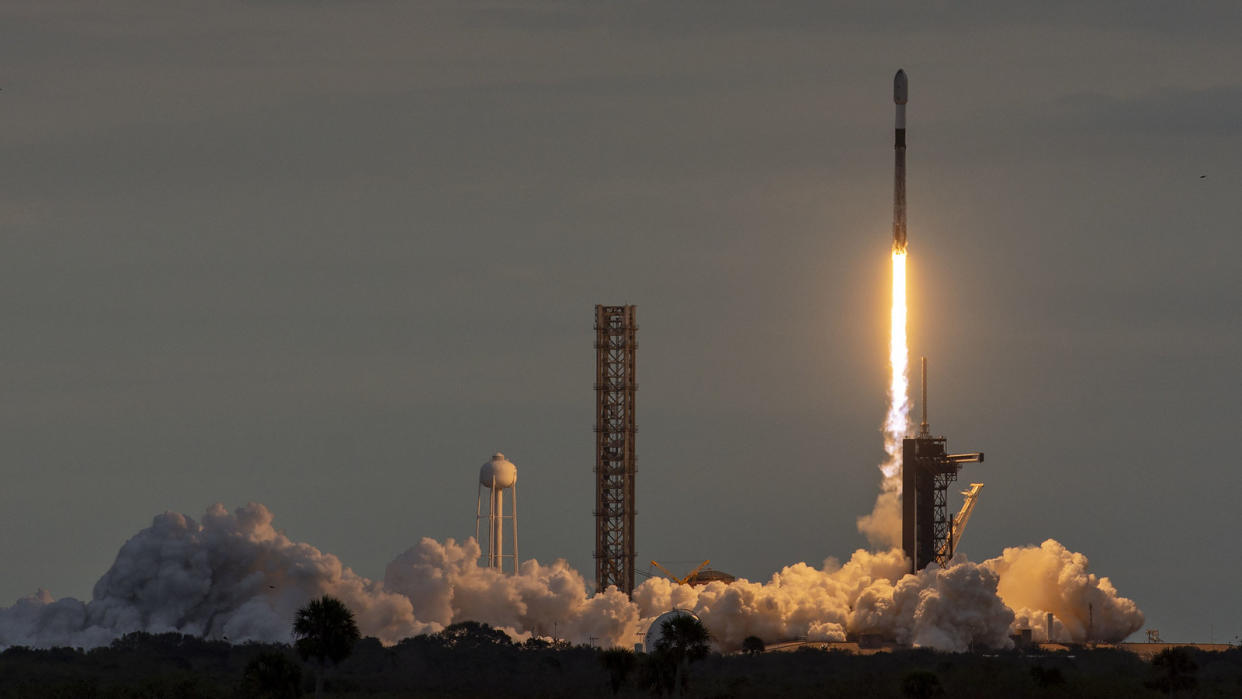Watch SpaceX launch 51 Starlink satellites to orbit Wednesday (March 1)

SpaceX plans to launch another big batch of its Starlink internet satellites to orbit on Wednesday (March 1), and you can watch the action live.
A Falcon 9 rocket topped with 51 Starlink spacecraft is scheduled to lift off from California's Vandenberg Space Force Base on Wednesday at 2:06 p.m. EST (1920 GMT; 11:20 a.m. local California time).
That's a one-day delay, as SpaceX had been targeting Tuesday (Feb. 28) for the liftoff. And it's possible the timeline could shift again; if everything looks good for SpaceX's planned launch of the Crew-6 astronaut mission from Florida early Thursday morning (March 2), "we'll adjust the Starlink mission accordingly," SpaceX said via Twitter on Tuesday.
Whenever the Starlink batch launches, you can watch live here at Space.com, courtesy of SpaceX, or directly via the company. Coverage is expected to start about five minutes before liftoff.
Related: 10 weird things about SpaceX's Starlink internet satellites

If all goes according to plan, the Falcon 9's first stage will return to Earth about 8 minutes and 45 seconds after launch, touching down on the SpaceX droneship Of Course I Still Love You, which will be stationed in the Pacific Ocean.
It will be the 12th launch and landing for this particular booster, according to a SpaceX mission description. Among the booster's 11 other missions were Crew-1 and Crew-2, SpaceX's first operational astronaut flights to the International Space Station for NASA.
The Falcon 9's upper stage, meanwhile, will continue soaring toward low Earth orbit, ultimately deploying the Starlink satellites there about 15.5 minutes after liftoff.
Related stories:
— SpaceX reveals 'Starshield' satellite for national security
— Starlink satellites: Everything you need to know about the controversial internet megaconstellation
— 8 ways that SpaceX has transformed spaceflight
Wednesday's planned mission comes just two days after another Starlink launch: A Falcon 9 lofted 21 Starlink "V2 mini" satellites from Cape Canaveral Space Force Station in Florida on Monday evening (Feb. 27).
The V2 mini is a next-generation variant that's more capable than older Starlink spacecraft, such as the 51 satellites going up on Wednesday. And V2 minis are bigger than their predecessors as well; they're small only in relation to the standard V2s, future satellites that are designed to launch aboard SpaceX's giant Starship Mars rocket, which is still in development.
SpaceX has already launched more than 4,000 Starlink satellites to orbit, but the megaconstellation will continue to grow far into the future. Elon Musk's company has permission to loft 12,000 of the spacecraft and has applied for approval to deploy an additional 30,000 as well.
The two Starlink missions are part of a busy week for SpaceX, given that it's also working to send Crew-6 toward the space station for NASA at 12:34 a.m. EST (0534 GMT) on Thursday from Kennedy Space Center in Florida.
Crew-6 was originally supposed to fly early Monday, but that attempt was scrubbed late in the countdown due to a ground-system issue. Projected bad weather pushed the next attempt to Thursday, provided that issue can be resolved by then.
Wednesday's Starlink launch from Vandenberg was supposed to fly on Monday as well, but SpaceX pushed it back due to weather concerns. If all had gone according to the original plan, the company would have launched three orbital missions on a single day.
Editor's note: This story was updated at 12:25 p.m. EST on Feb. 28 with the new launch date of March 1 for the Starlink mission.
Mike Wall is the author of "Out There" (Grand Central Publishing, 2018; illustrated by Karl Tate), a book about the search for alien life. Follow him on Twitter @michaeldwall. Follow us on Twitter @Spacedotcom or Facebook.

